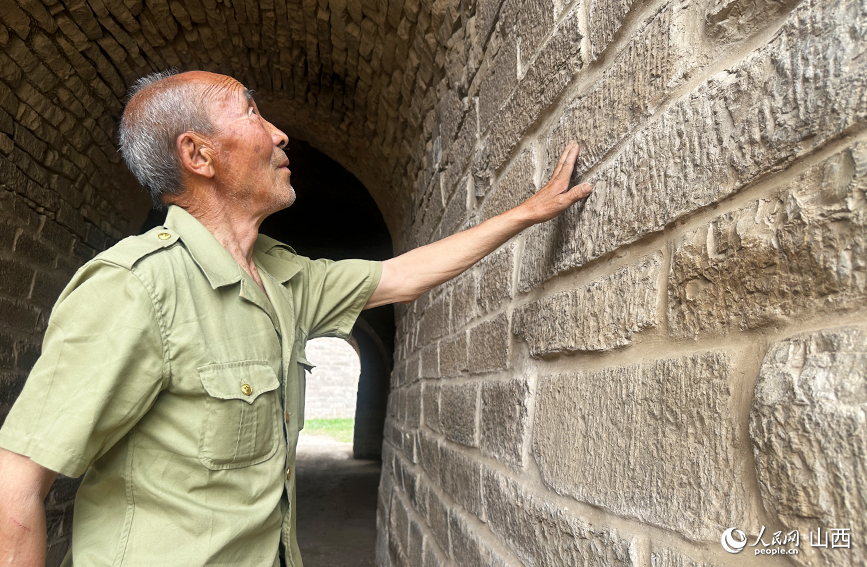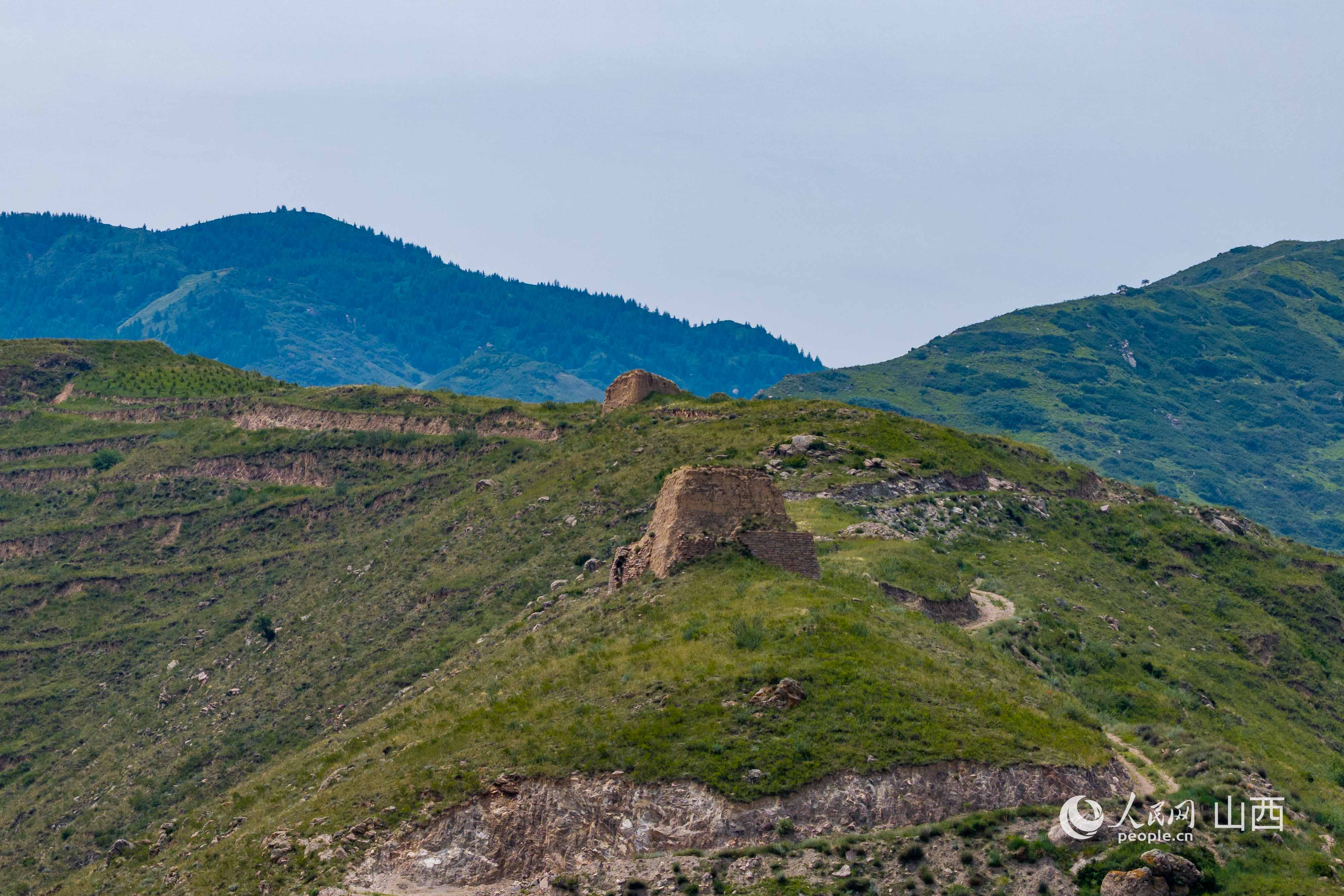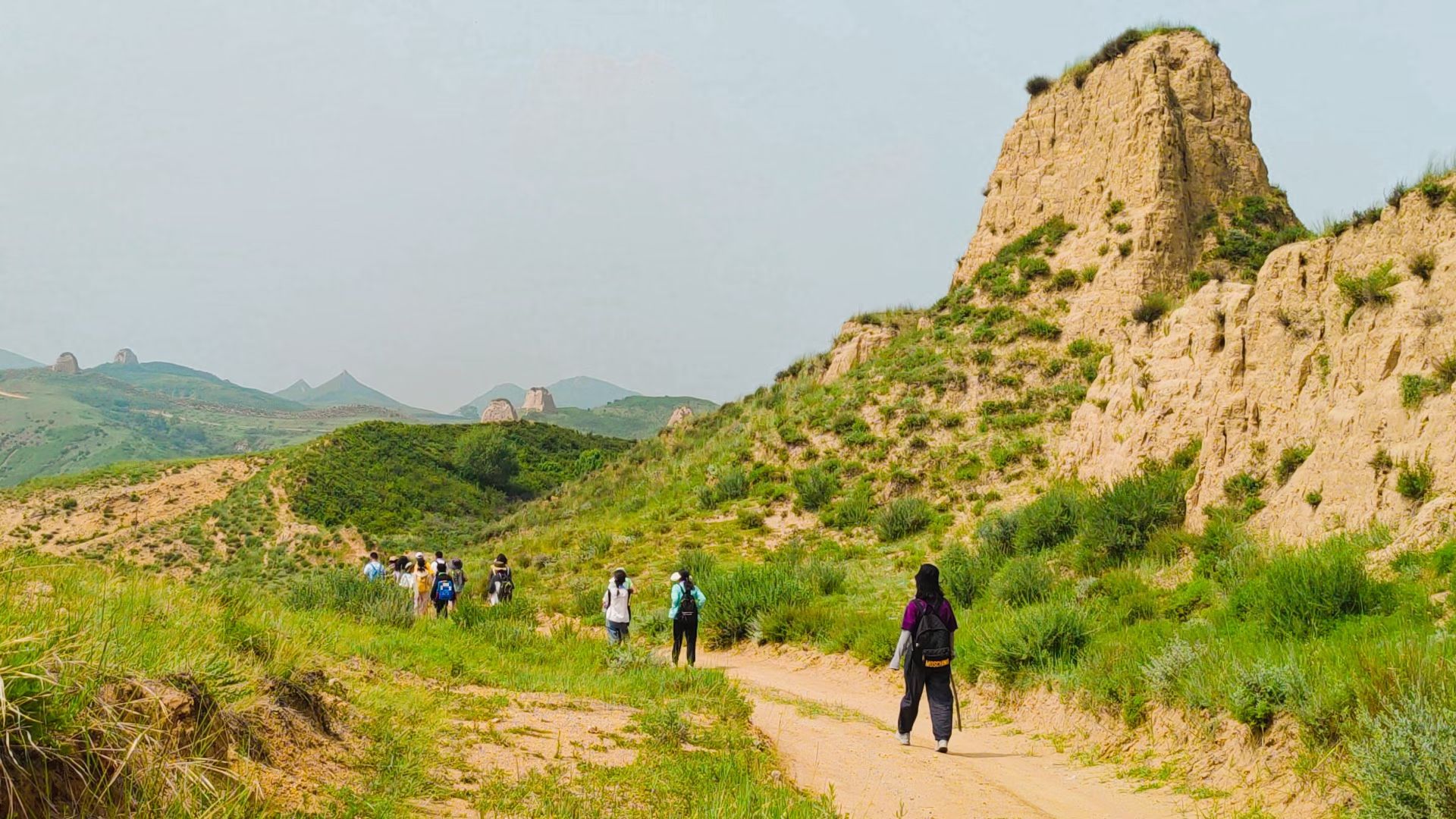




- BRNN
- BRI News
- BRNN News
- Database
Official Documents Polices and Regulations
Inter-government Documents International Cooperation BRI Countries
Business Guide Economic Data BRI Data
Trade
Investment Projects Latest projects
Cases - Content Pool

Yang Jie, a Great Wall protector, touches the Great Wall in Shuozhou city, north China's Shanxi Province. (People's Daily Online/Dong Tong)
"Three generations of my family have lived at the foot of the Great Wall, and standing guard here brings peace of mind," said 76-year old Yang Jie in Pinglu district, Shuozhou city, north China's Shanxi Province.
In 2016, when the city established its Great Wall protection team, Yang signed up immediately.
Yang patrols a gate and five beacon towers of the Great Wall at least twice a month.
Shanxi boasts abundant Great Wall cultural resources, with Shuozhou in particular home to 327 kilometers of the Great Wall, primarily from the Han (202 B.C.-220 A.D.), Northern Qi (550-577), and Ming (1368-1644) dynasties.

Photo shows beacon towers of a section of the Great Wall in Yingxian county, Shuozhou city, north China's Shanxi Province. (People's Daily Online/Ma Mengdi)
In recent years, Shuozhou has intensified conservation efforts through emergency protection measures, reinforcement and repair work, environmental restoration, and enhanced safety infrastructure, ensuring the timely restoration of many ancient Great Wall fortresses.
Districts and counties in the city have established comprehensive mechanisms for the recruitment and training of protectors, along with patrol reporting systems. These protectors predominantly reside in villages along the Great Wall and include local residents, village officials, retired workers who have returned home, and farmers.
Today, Shuozhou employs over 180 Great Wall protectors like Yang, whose primary responsibilities include preventing tourists and villagers from damaging cultural relics, clearing debris around the Great Wall, and identifying and reporting safety hazards discovered during patrols.
"I have walked through all 44 ancient fortresses in Youyu county, as well as the Great Wall sections in neighboring Zuoyun county and Pinglu district," said Zhang Hongshi, who became a Great Wall protector after retirement.

Photo shows Zhang Hongshi, a Great Wall protector, during a visit to an ancient Great Wall ruin in Shuozhou city, north China's Shanxi Province. (Photo courtesy of the interviewee)
Beyond his patrol duties, Zhang purchases books to study Great Wall culture and shares relevant articles on his personal WeChat official account.
"To protect the Great Wall, we must study it—only then can we inspire more people to understand its culture. The more they understand, the stronger their conservation awareness becomes," he added.
On July 3, the Youyu outdoor sketching service center, located within the Shahu Pass scenic area, welcomed over 30 faculty and students from the College of Fine Arts, Shanxi Normal University. Over the course of half a month, they used brushes and paints to "engage in dialogue with" the Great Wall.
"During summer vacation, we expect more than 1,700 people from universities and training institutions to visit," said Wu Peng, director of the service center.
The Shahu Pass is a crucial part of the Great Wall. Leveraging its historical reputation, Youyu county has focused on developing a national-level outdoor sketching base. With continuously improved facilities and increasingly rich creative elements, the site attracts numerous artists and students.

Students for outdoor sketching go to a section of the Great Wall in Shuozhou city, north China's Shanxi Province. (Photo courtesy of the interviewee)
"Since construction began in 2020, we've received over 50,000 visitors," Wu said.
By promoting the integration of the Great Wall with cultural tourism, Shuozhou has developed new tourism formats and products along the wall, including camping, skiing, homestays, and cultural and creative industries.
Today, the 815-kilometer-long "Great Wall No.1 Tour Road" connects over 100 villages throughout Shuozhou, winding like a mighty dragon across the region.

Tel:86-10-65363107, 86-10-65368220, 86-10-65363106